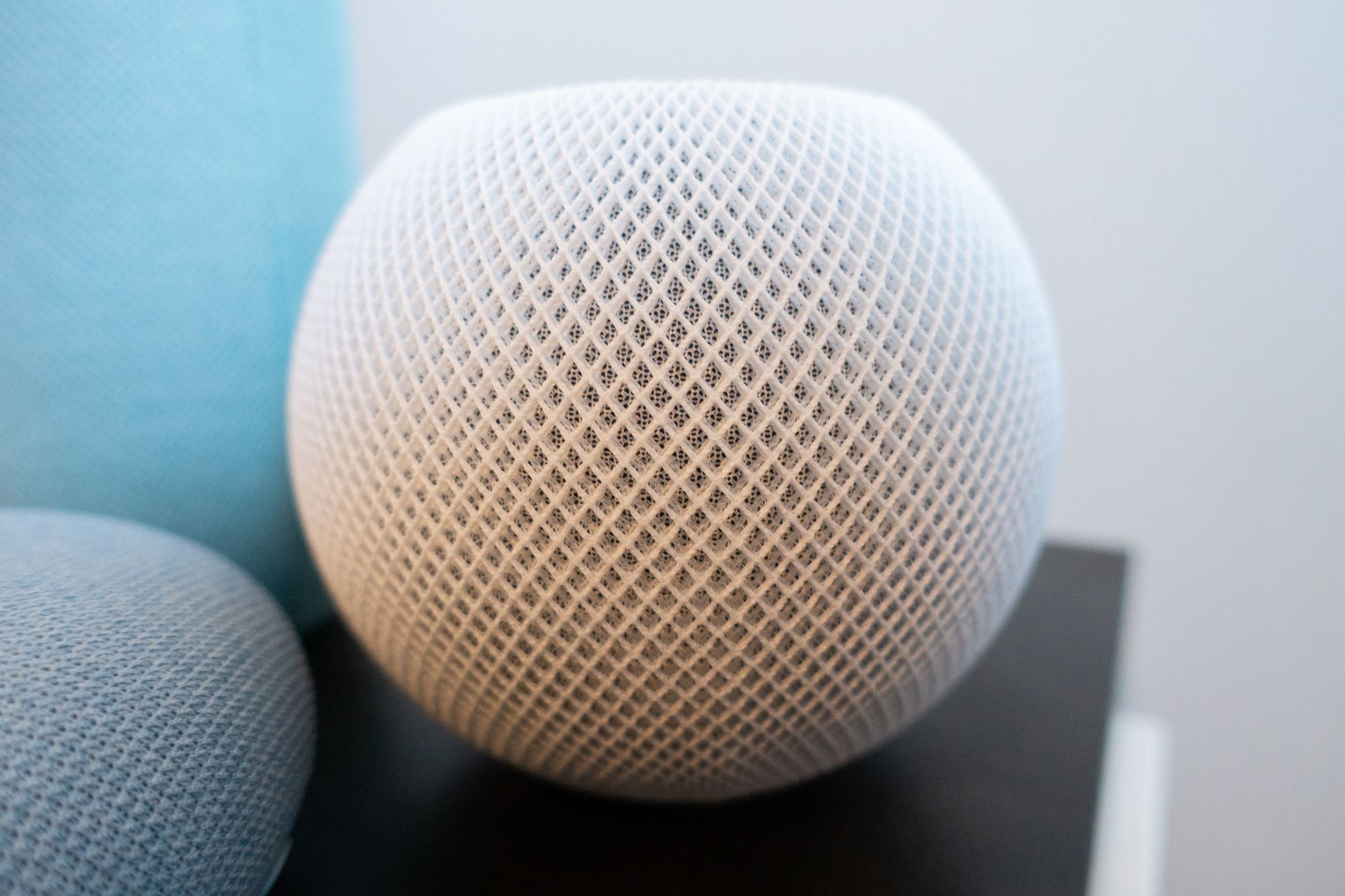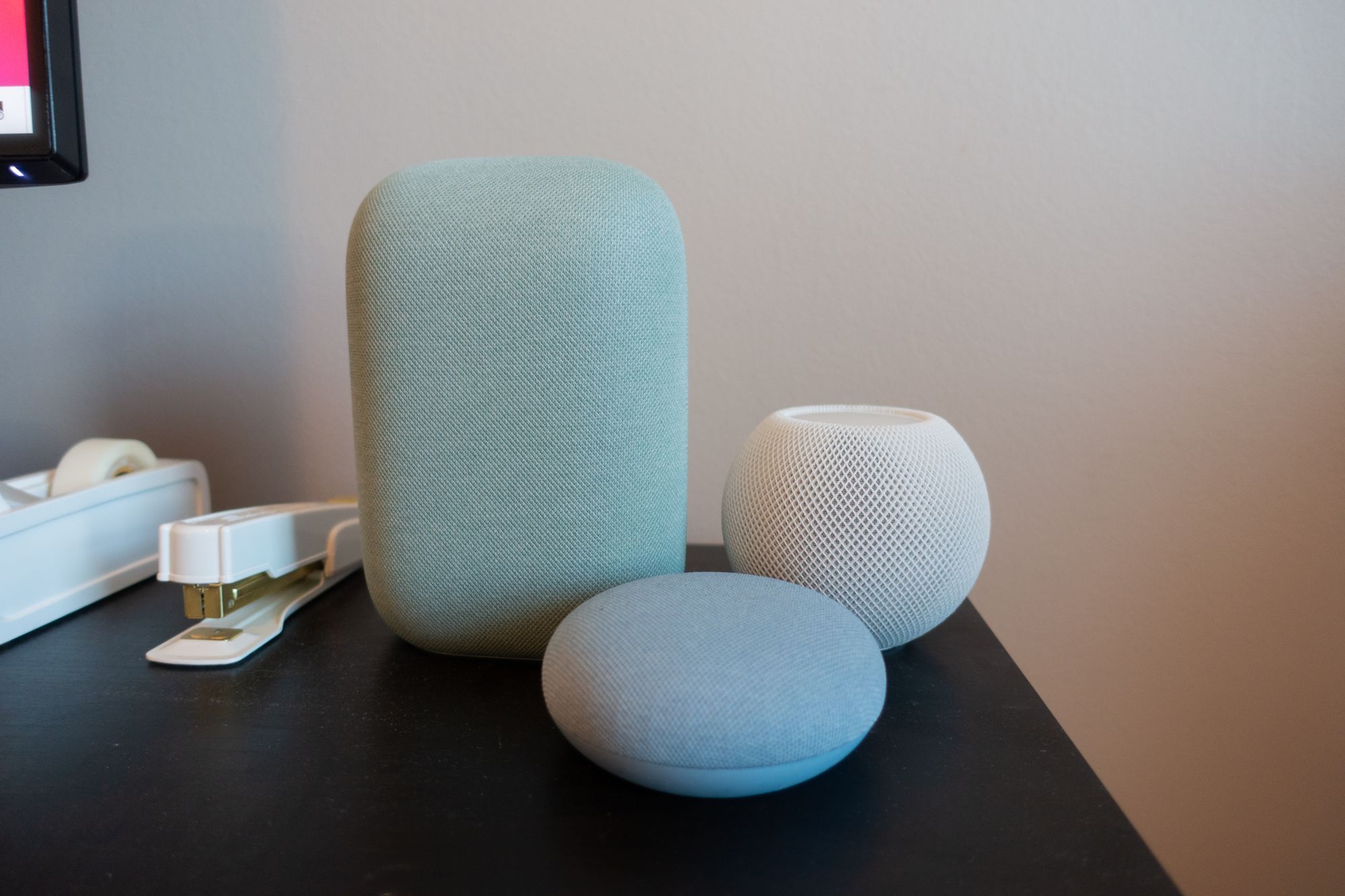HomePod Mini: The Review I’ve Wanted to Write for 3 Years

The HomePod mini is something I’ve been campaigning for since November 2017, 3 months before the original HomePod was even released. It just seemed obvious to me that if Apple wanted to get a foothold in the smart speaker market, they needed something lower cost to even get people to consider it.
In November 2020, it’s pretty clear that the HomePod was a solid product that sounded great, but didn’t light the world on fire in terms of sales. So when Apple announced the HomePod Mini this fall, you can imaging how excited I was to finally get the thing I had been hoping for the last 3 years. Apple, as they’re one to do, still surprised me with this product. Let me explain.
Market Position
A lot of the talk around the original HomePod was that “it’s not a smart speaker, it’s a speaker first with some smarts on top.” As I said in numerous ways at the time, that seemed like a needless distinction and that all wireless speakers were smart speakers these days, but I bought a bit into that at the time. My suggested HomePod Mini was slightly smaller than the normal one and cost $199. To my surprise, the actual HomePod Mini is much smaller than I expected, and half the price at just $99.
In terms of getting this into more homes, the $99 price point is a sweet spot, as it puts it into Christmas gift range for some families, and in the impulse purchase range for even more people. As we’ll get into later in the review, this product was not designed to blow you away with sound, it was designed to be convenient. And since they work great together, you could get 3 of these and put them in your office, living room, and kitchen all for the price of one standard HomePod.
I don’t expect to see Apple shoot to the top of the smart speaker market with this product, the $30 speakers will still dominate the unit sale numbers, but I do expect this to take the HomePod from a very niche product to something that a lot more iPhone owners justify adding to their ecosystem of Apple devices.
Set Up
Setting up a HomePod Mini is familiar to all of Apple’s mobile products these days.
- Hold the new device next to your iPhone or iPad
- Tap through a few prompts, mostly about privacy
- Done
The Mini also asks you to hold your camera up to a pattern on the top of the HomePod, much like an Apple Watch.
Features and Design

Your first impressions of this thing will inevitably be, “it’s so tiny!” This little globe is 3.5” tall and is likely smaller than you imagined it in your head. It is definitely more in the size class of an Echo Dot or Google Home Mini than the $100-ish speakers from either Amazon or Google.
It’s round design houses a 360° speaker, much like its older brother. However, this smaller speaker lacks the intelligent configuration that uses 3D sound to figure out where it is in space and adjusting itself accordingly. Instead, it emits the same sound in all directions, which is less fancy, but ultimately works great. What this means in practice is that you can place the HomePod Mini anywhere you want and it will send sound in your direction.
The HomePod Mini matches the inputs of its big brother, letting you tap the middle to play/pause, tap plus and minus icons to change the volume, and hold down on the top to access Siri without asking, “Hey Siri”.
Siri of course is here, and does everything Siri does, which I won’t get into here. It’s Siri. It’s okay for the most part, and very good for smart home stuff.
New this year is a feature called, “Intercom”. This lets you send messages to other HomePods around your home. You can send them from iPhones and iPads (and Macs, presumably), or HomePods themselves. You can send a message to the whole home or a specific speaker, and the recording of your message will play on either all HomePods are just the one you specify. It works well, and I can imagine this would be useful for families in larger homes, but I don’t see myself using this much in the future.
Another new feature this year is an improvement over the original HomePod. You can hold your iPhone up to the HomePod Mini and whatever’s playing on your phone will instantly start playing on the Mini. Hold your phone to the Mini again and it will transfer back to the iPhone. This is very similar to what the original HomePod has, but as anyone who has a 2018 HomePod knows, that works about 1/3 of the time there. On the Mini, it works 100% of the time, and it’s thanks to the U1 chip that lets your Apple devices know where they are in proximity to each other. It’s good enough that I would almost buy a new full size HomePod to replace my old one if they added this feature.
You can pair two Home Pod Minis together, just like the big ones, and they’ll behave like a single speaker, but emit stereo sound. I’ll get more into this in the sound quality section.
Finally, we need to mention two things that these speakers do not have: Bluetooth and an Aux connection. These are not surprises, nor are they different from the original HomePod, but they are worth mentioning. If you are not all in on Apple’s ecosystem, then this product is not for you. Additionally, it’s worth noting that down the road, there’s potential that AirPlay will not be supported in its current form and these will become coasters. This is less of a problem for these since they’re less expensive, but I remain bothered by this in the big HomePods, which are expensive enough to be “keep for the rest of your life” speakers.
Sound Quality

When I got the original HomePod, my initial reaction to the sound was, “how the hell is this a speaker this small making a sound this big?!”
When I got the HomePod Mini, my initial reaction was, “yeah, this sounds about right for a speaker this small.”
I’m not an audio expert, so I’ll spare you the attempts to wax poetic about sound quality, so I’ll tell you how it compares to a few other speakers I can compare it to.
Apple HomePod ($299)
Obviously, it’s much worse. For 1/3 the price, it would be insane to expect that, but it’s worth noting that if you were hoping to get something “almost as good” as the bigger speaker, you’re in for a disappointment.
Google Nest Audio ($99)
This was the comparison I really wanted to make, and I think it’s the most relevant on this list. At the same price point, Google’s audio-focused speaker sounds far better than the HomePod Mini. It’s bigger, no doubt, and the fact that it is a Google product will turn some off, but it sounds way better to my ears. Doing some side-by-side tests between the two really made the HomePod Mini sound bad, frankly. There’s comparatively no low end on the Mini, which just makes it sound like a micro-speaker.
Given how excited Apple sounded about the sound in the HomePod Mini, I expected this comparison to be closer than it was, but it turns out the physics are just too much.
Google Home Mini ($49)
Amazingly, this is the closest comparison I can find in my home for the HomePod Mini. The HomePod definitely sounds better, but it’s not remarkably better. The HomePod Mini gets louder, and it definitely sounds more “crisp” to me, though.
HomePod Minis as Stereo Pair ($198)
The HomePod Mini can pair with one Mini to create a stereo pair. When in this mode, you get real stereo sound, which is great, and it helps add some heft to the sound. It’s still not terribly impressive though, and still falls behind a single Nest Audio to my ears.
Overall Audio Feelings
This speaker feels more like a smart assistant speaker that can play music than a speaker with a smart assistant built in. What I mean is unlike the bigger HomePod which sounds better than it’s size and price point would indicate, the HomePod Mini sounds exactly like you’d expect something this small, and a little worse than you may like for $100.
Recommendation
Apple made a smart speaker, period.
It may be twice as expensive as the Google Home Mini and Amazon Echo Dot, but it’s definitely more in that class when it comes to sound quality and feature set. This isn’t a bad thing by any means, it’s just worth noting.
Do not buy this speaker because it’s the best sounding speaker, buy it because you want decent-sounding Siri-enabled speakers. Buy it because you want to build out a multi-room speaker system with intercom features. Buy it because you’re all in on Apple and you don’t trust any other companies to have smart speakers in your home.
